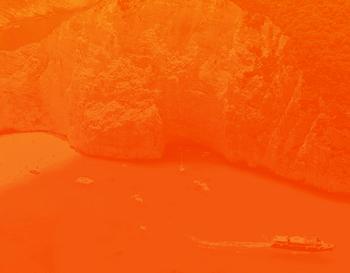Hi Nytram
I am a little surprised to learn that there is scaffolding around the Sphinx. I thought that the main restoration work was complete, are you sure that you don't mean 'The Colossi of Memnon' or is it me who has missed something? However I am sure that a more recent visitor to the Giza plateau will help to inform us both. I do know that there is scaffolding around the left hand one of the two Memnon statues. If it is these statues that you are referring to I may be able to help with your question.
Tez
I am a little surprised to learn that there is scaffolding around the Sphinx. I thought that the main restoration work was complete, are you sure that you don't mean 'The Colossi of Memnon' or is it me who has missed something? However I am sure that a more recent visitor to the Giza plateau will help to inform us both. I do know that there is scaffolding around the left hand one of the two Memnon statues. If it is these statues that you are referring to I may be able to help with your question.

Tez
The BBC showed footage of the sphinx the other day with scaffolding erected around it.
Recent footage? Where did you see this, I am most curious.
Tez
Tez
Tez
It was on BBC News 24 - last weekend I believe. It may have been old footage shown recently - I am not sure. I was not really listening, but it did give the impression it was restoration that was happening now. I remember thinking I wonder how they are going to do the sound & light show with all the scaffolding.
It was on BBC News 24 - last weekend I believe. It may have been old footage shown recently - I am not sure. I was not really listening, but it did give the impression it was restoration that was happening now. I remember thinking I wonder how they are going to do the sound & light show with all the scaffolding.
Tez
Fastrack on News 24 just mentioned the fact that the sphinx was undergoing its latest restoration but would be staying open to the public during the work.
Fastrack on News 24 just mentioned the fact that the sphinx was undergoing its latest restoration but would be staying open to the public during the work.
the BBC definately announced restoration had just started and showed footage but l cant recall a time scale. There shouldnt be a problem viewing from the vantage points --- it just spoils the photo.
We were there three weeks ago, the scaffolding is to strengthen the neck area (a weakness). I hope they make a better job than when they put 'stone cladding' around the bottom half, a few years ago!
Ps. Did you know that part of the Sphinx' beard is in the British museum in London. Why we don't give them all their antiquities back, I don't know!!!
Ps. Did you know that part of the Sphinx' beard is in the British museum in London. Why we don't give them all their antiquities back, I don't know!!!
Thanks to all for your info,
I must have missed that one completely. There was talk some time ago of removing the cement collar from beneath the 'Nemes' headdress as this has always drastically changed the appearance of the head from what it really should look like.
BigPhil,
There is still no absolute proof that the beard in the British Museum really is from the Sphinx.
It was found in the area below the head (which seems like proof to me) but several major problems arise. First of all the beard in the British Museum is of a style that did not appear until a much later period and secondly there is no point of attachment for the beard anywhere on the chin of the Sphinx.
As for the cladding on the lower body and paws, it is believed to be a good representation of the original work. Lots of restoration has taken place over thousands of years starting with Thutmosis IV continued by Ramesses II, then the Romans had a try. Some of the earlier attempts caused more harm than good, The Emile Baraize restoration (1925-36) added the cement collar mentioned above to stabilise the head. All of these attempts retained or refitted the original Old Kingdom large blocks. Most repairs consisted of slapping gypsum cement compounds on the flaking body of the Sphinx and applying new blocks. This prevented any 'breathing' of the Sphinx, which resulted in the blocks falling off again, usually taking a flaked layer with it. The latest restoration does not actually attach the blocks to the body and flanks, but instead uses a clever interlocking method to keep them together. The Sphinx was never a solid block of stone, but rather a composite statue carved from a piece of limestone whose strata had varying qualities and the fitted blocks to help give this outcrop some definition. I personally think that the most recent restoration is a credit to all of the dedicated team from the Egyptian Antiquities Organisation, without them the monument would look a very sorry site indeed.
Tez
I must have missed that one completely. There was talk some time ago of removing the cement collar from beneath the 'Nemes' headdress as this has always drastically changed the appearance of the head from what it really should look like.
BigPhil,
There is still no absolute proof that the beard in the British Museum really is from the Sphinx.
It was found in the area below the head (which seems like proof to me) but several major problems arise. First of all the beard in the British Museum is of a style that did not appear until a much later period and secondly there is no point of attachment for the beard anywhere on the chin of the Sphinx.
As for the cladding on the lower body and paws, it is believed to be a good representation of the original work. Lots of restoration has taken place over thousands of years starting with Thutmosis IV continued by Ramesses II, then the Romans had a try. Some of the earlier attempts caused more harm than good, The Emile Baraize restoration (1925-36) added the cement collar mentioned above to stabilise the head. All of these attempts retained or refitted the original Old Kingdom large blocks. Most repairs consisted of slapping gypsum cement compounds on the flaking body of the Sphinx and applying new blocks. This prevented any 'breathing' of the Sphinx, which resulted in the blocks falling off again, usually taking a flaked layer with it. The latest restoration does not actually attach the blocks to the body and flanks, but instead uses a clever interlocking method to keep them together. The Sphinx was never a solid block of stone, but rather a composite statue carved from a piece of limestone whose strata had varying qualities and the fitted blocks to help give this outcrop some definition. I personally think that the most recent restoration is a credit to all of the dedicated team from the Egyptian Antiquities Organisation, without them the monument would look a very sorry site indeed.
Tez
I was in Cairo last week and the Spinx has scaffold up to mid chest height. Apparently they are trying to do something about the disastrous earlier attempts at reconstruction/repair (by which I mean the 20th century ones).
was in cairo last tuesday and I can assure you that there was,nt any scaffolding anywhere!!!! just loads of camels!
I was there on 27th June and there is definately scaffolding to the left side.
We were there at the beginning of Jun, there was a veyr small amount of Scaffolding to the left of the Sphinx as they are currently restoring part of the base, it wasn't then!! as much as people were making out, we have no shots of scaffolding in any of our pictures.
Still an wonderful sight to see. These things unfortunatly need to be restored and it does take a very long time to do.
Still an wonderful sight to see. These things unfortunatly need to be restored and it does take a very long time to do.
Yes there is a very small amount of scaffolding on the left hand side of the sphinx (if viewed from the front). it is behind the head and about the level of it's shoulder. It does not impinge to much on your photographs, it still looks fantastic.
Tez
Tez

Post a Reply
Please sign in or register an account to reply to this post.

